In a world increasingly conscious of ethical consumption and sustainable choices, the tattoo industry is undergoing a quiet, yet powerful, revolution. What once seemed like a niche concern is now a mainstream consideration: the ingredients in your tattoo ink. More and more tattoo enthusiasts are looking beyond the needle and design to ask a crucial question: is my tattoo truly cruelty-free? This growing awareness has propelled vegan tattoo ink into the spotlight, transforming how artists and clients approach body art.
For decades, the standard tattoo ink formulation included ingredients derived from animals, often without artists or clients even realizing it. From bone char used for black pigments to shellac from beetles for shine, and even gelatin or glycerin as binders, animal products were woven into the very fabric of the tattoo process. But times are changing. Vegan tattoo ink offers an alternative that aligns with ethical values, promising the same vibrant results without compromise. Let’s dive deep into everything you need to know about this increasingly popular choice.
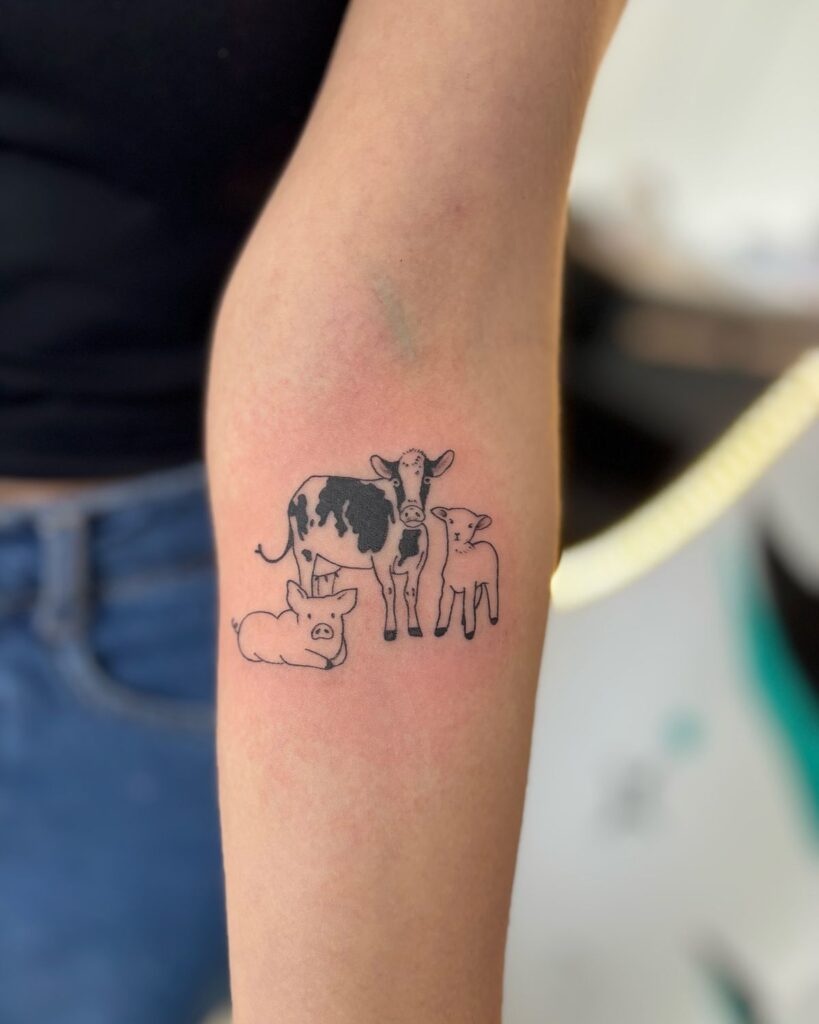
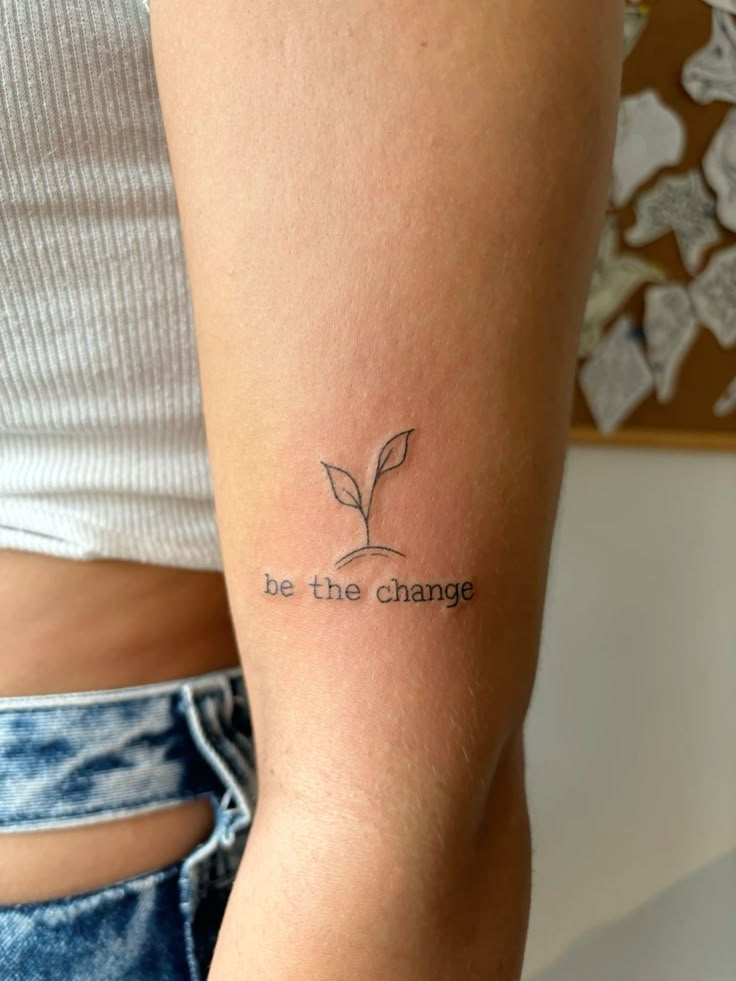
What Makes Ink “Vegan”? The Key Ingredients
Before we can appreciate what makes an ink vegan, it’s helpful to understand what traditional inks could contain. The journey of a tattoo begins with the ink, a seemingly simple liquid made of pigment and a carrier solution. However, the origin of these components can vary wildly.
Animal-Derived Ingredients to Avoid
Historically, and in some non-vegan inks still today, several animal products found their way into tattoo formulations:
- Bone Char (for black pigments): This is perhaps the most common animal-derived ingredient. It’s produced by burning animal bones (often from cattle) at high temperatures to create a jet-black pigment. Many traditional black inks used this for their deep, rich tones.
- Glycerin (as a carrier): Glycerin is a common humectant, meaning it helps to keep things moist. It’s used in inks to stabilize the suspension of pigments and ensure smooth application. While plant-based glycerin exists, animal-derived glycerin (often from animal fats) has been a prevalent choice in non-vegan inks.
- Gelatin (as a binder/stabilizer): Derived from animal collagen, gelatin is used as a thickener or binding agent in some inks to maintain consistency and prevent pigment separation.
- Shellac (for shine/binding): This resin is secreted by the female lac bug, primarily found in India and Thailand. It’s sometimes used in inks for its binding properties and to create a glossy finish.
- Carmine (for red pigments): Also known as cochineal extract, carmine is a vibrant red pigment obtained from crushing cochineal insects.
- Lanolin (from sheep wool): Lanolin, a wax secreted by wool-bearing animals, can sometimes be found in ink formulations or more commonly in traditional tattoo aftercare products.
The presence of these ingredients means that many tattoos, even if the client was vegetarian or vegan, were unknowingly not aligned with their lifestyle choices. The shift to vegan ink is about removing these hidden components entirely.
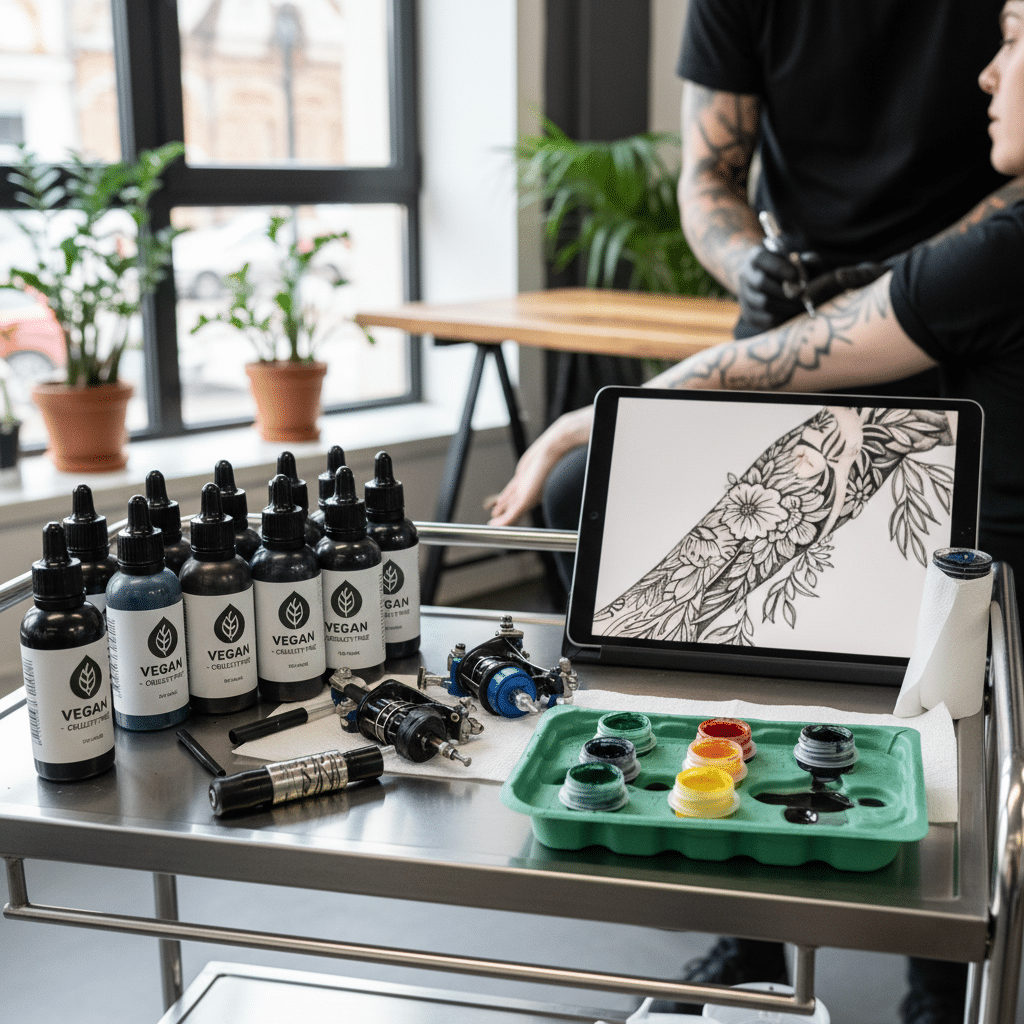
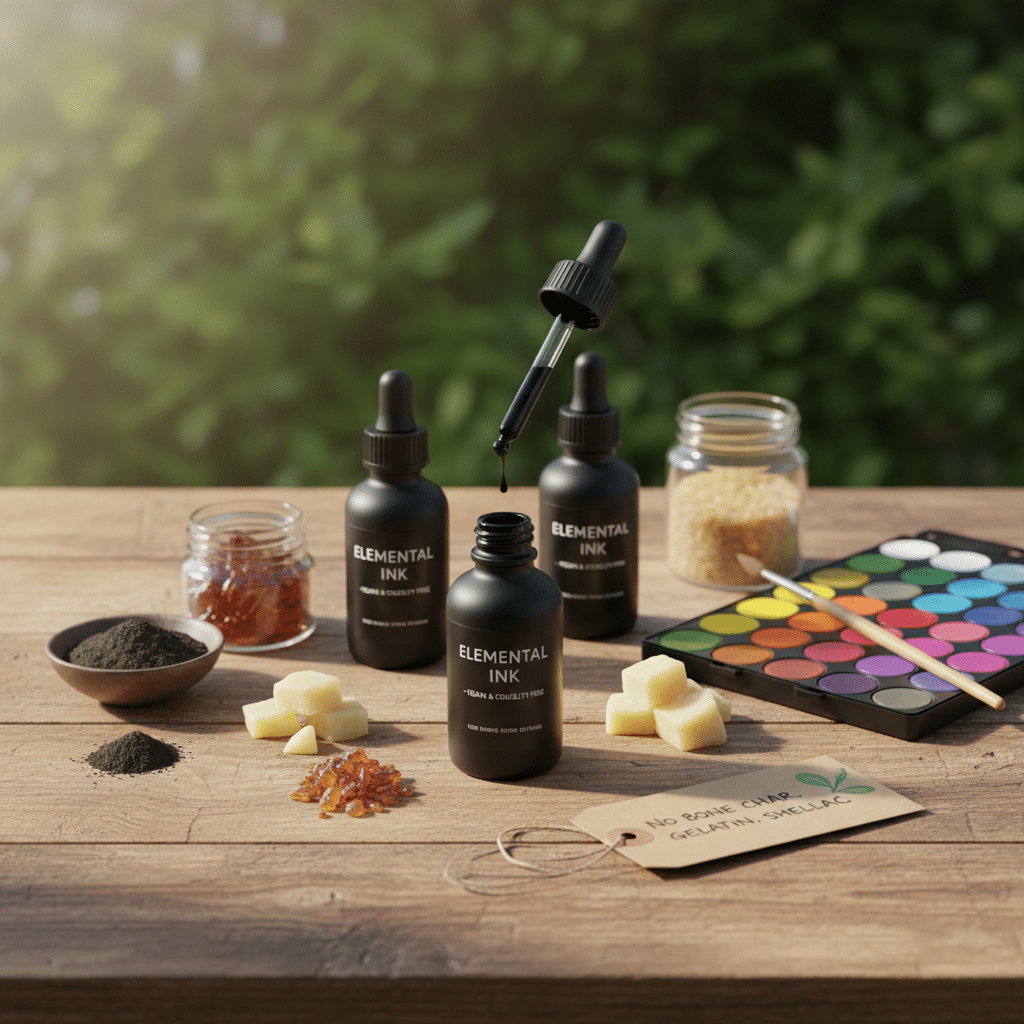
Plant-Based and Mineral Alternatives
Vegan tattoo inks meticulously exclude all animal-derived components. Instead, they rely on a combination of plant-based and mineral alternatives that deliver equally stunning results.
- Plant-Based Glycerin: Most vegan inks use vegetable glycerin, typically derived from soybeans, coconut oil, or palm oil, as their carrier and stabilizing agent. This performs the same function as its animal-derived counterpart without ethical concerns.
- Witch Hazel: This plant extract is another popular carrier solution in vegan inks. It’s known for its soothing properties and helps to thin the pigment for easy application.
- Mineral Pigments: The vibrant colors in vegan inks often come from naturally occurring mineral compounds. For example, titanium dioxide (a white pigment), iron oxides (for reds, browns, yellows), and carbon black (from soot, not bone char) are widely used. These are processed to ensure they are safe for tattooing.
- Logwood and Other Botanicals: Certain colors, particularly black, can also be derived from natural plant sources like logwood, which has been used as a dye for centuries.
These alternative ingredients ensure that the ink is not only animal-friendly but also often free from harsh chemicals, appealing to those seeking a more natural approach to their body art.
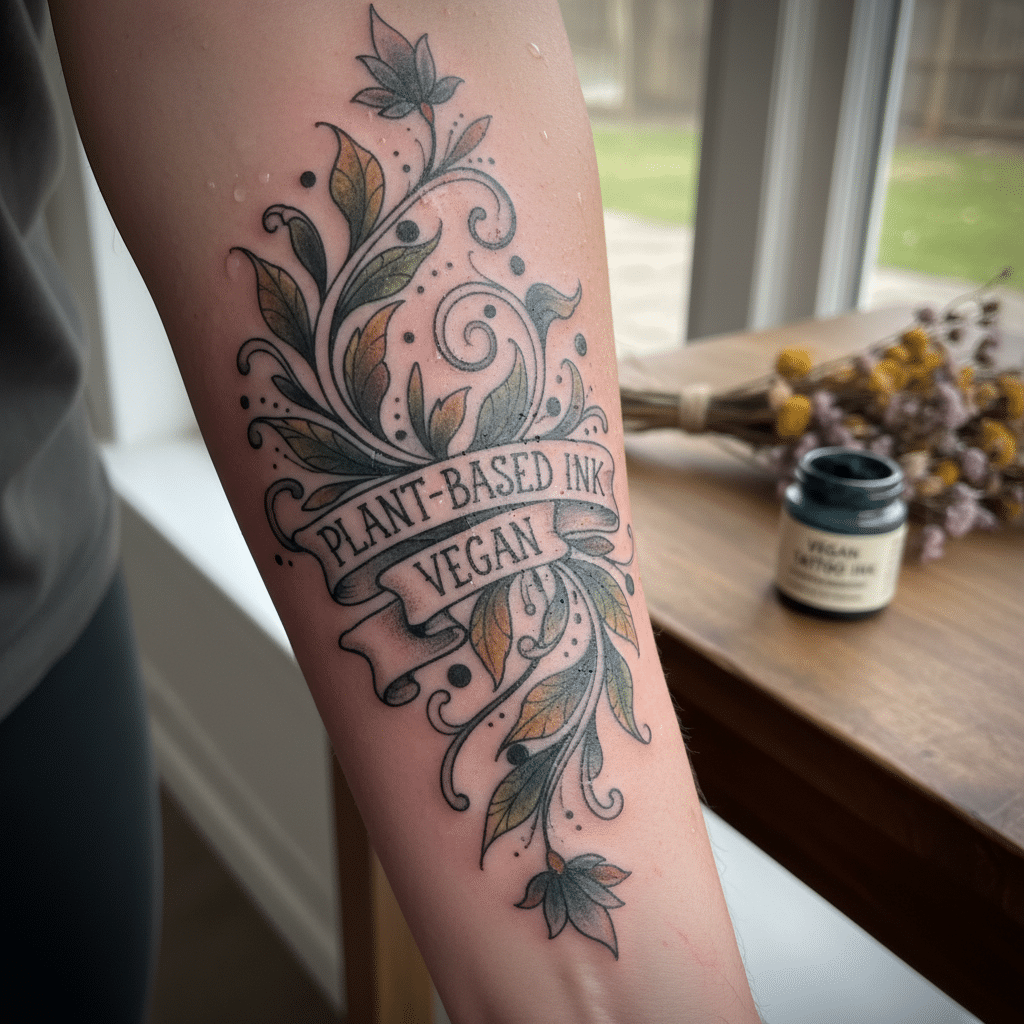
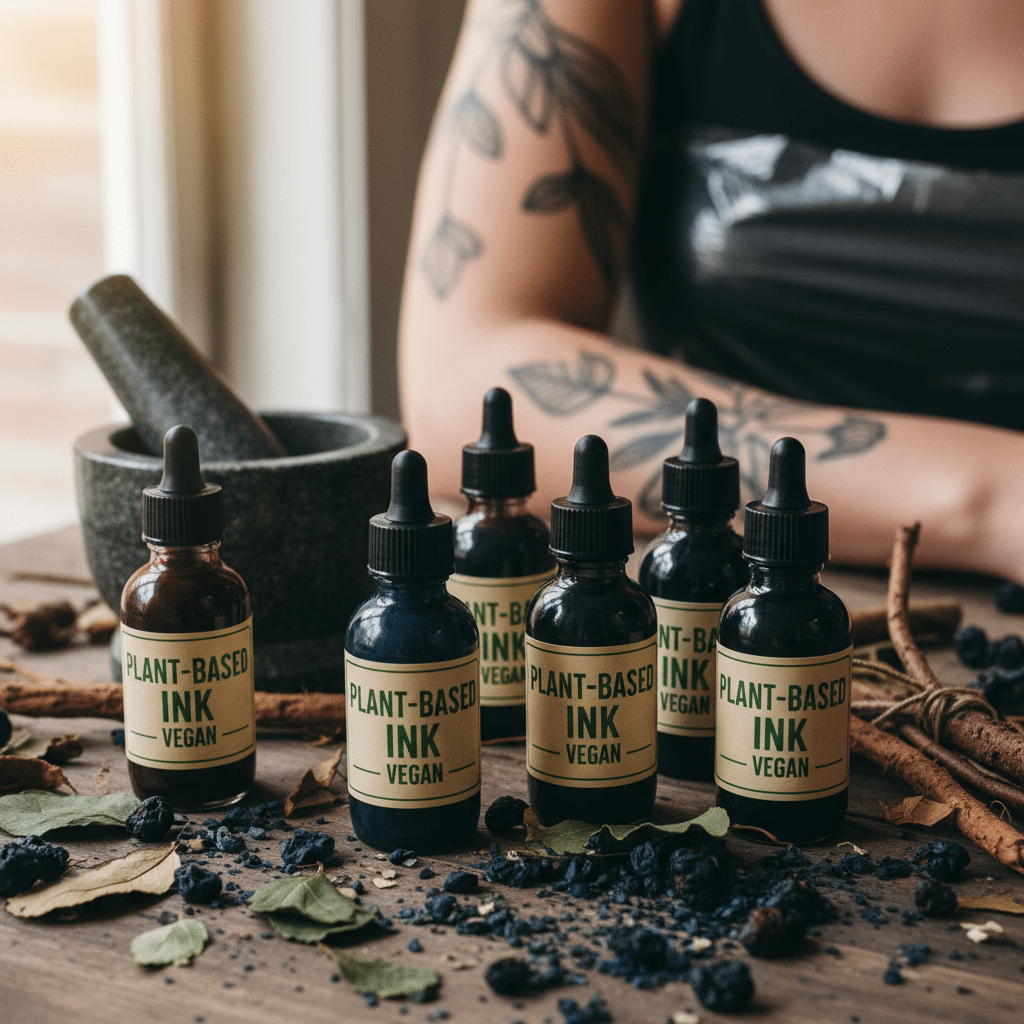
Why Choose Vegan Tattoo Ink? The Ethical and Health Benefits
The decision to choose vegan tattoo ink often stems from a deeply personal commitment to ethical living. However, the benefits extend beyond just animal welfare, touching upon potential health advantages and environmental impact.
Ethical Considerations: Cruelty-Free and Sustainable
For vegans and ethical consumers, the core appeal of vegan tattoo ink is its cruelty-free nature. This means no animals were harmed, exploited, or used in any part of the ink’s production. It’s a direct extension of a lifestyle that seeks to minimize suffering and environmental footprint.
Opting for vegan ink aligns with:
- Animal Welfare: By choosing inks free from bone char, shellac, carmine, and animal-derived glycerin, you’re directly contributing to reducing demand for products that involve animal exploitation and slaughter. This is a significant step towards a more compassionate industry.
- Environmental Impact: While not exclusively a vegan concern, the production of animal-derived ingredients often carries a higher environmental cost in terms of land use, water consumption, and greenhouse gas emissions compared to plant-based or mineral alternatives. Choosing vegan ink supports a move towards more sustainable practices within the industry. It’s akin to making eco-friendly choices in other areas of your life, like opting for 6 important outdoor renovations tips for an eco-friendly home. This holistic approach to sustainability is gaining traction, with many consumers also rethinking their choices in areas like home construction materials, such as exploring options for smart, safe, and sustainable wood.
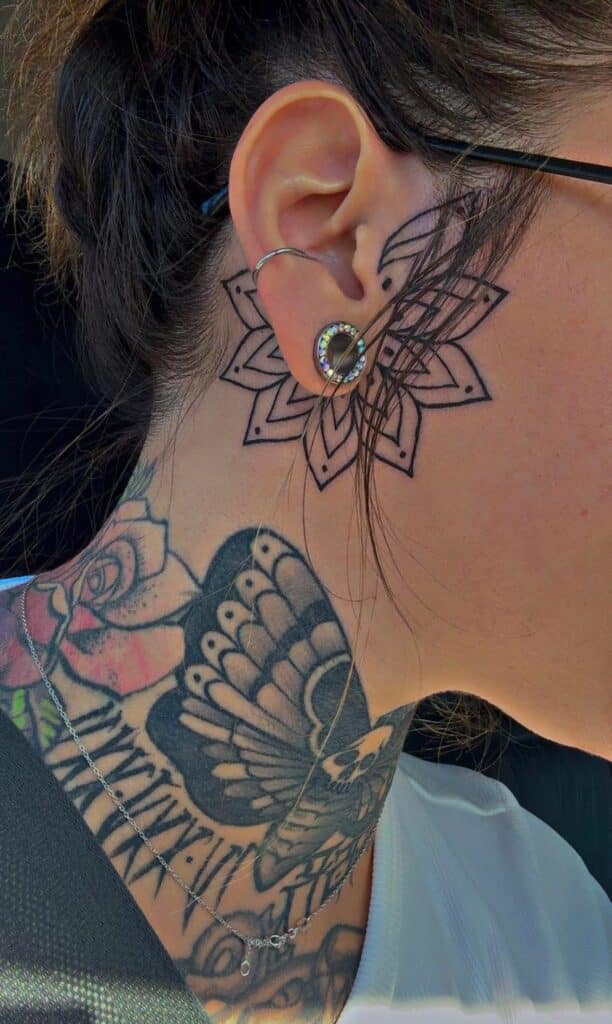

Potential Health Advantages
While direct, large-scale scientific studies specifically on the long-term health benefits of vegan tattoo ink versus traditional ink are still emerging, many proponents highlight potential advantages:
- Reduced Allergic Reactions: Some individuals may be sensitive or allergic to certain animal-derived proteins or byproducts found in traditional inks. While allergies to synthetic or mineral pigments can still occur, removing animal components can eliminate a potential allergen source for some. This is especially relevant for people with known animal product sensitivities.
- Purer Ingredients: Vegan ink manufacturers often pride themselves on using high-quality, purer ingredients, which can translate to fewer unknown additives. They typically avoid heavy metals and formaldehyde, which can sometimes be found in cheaper, less regulated inks.
- Transparency: The vegan movement, in general, champions transparency. Manufacturers of vegan inks are often more upfront about their ingredient lists, allowing consumers to make informed choices.
It’s important to remember that all tattoo inks, regardless of their vegan status, should meet safety standards. Always ensure the ink used by your artist is reputable and compliant with regulatory guidelines.
Environmental Impact
The environmental footprint of a tattoo might not be the first thing that comes to mind, but it’s a valid consideration in our increasingly eco-conscious world.
- Less Resource-Intensive Production: Sourcing plant-based glycerin or mineral pigments generally requires fewer resources (land, water, energy) compared to raising animals for their byproducts.
- Waste Reduction: A shift towards more naturally derived pigments can potentially lead to less reliance on synthetic compounds whose manufacturing processes can be energy-intensive or create undesirable byproducts.
- Holistic Sustainability: For many, choosing vegan ink is part of a broader commitment to sustainable living, mirroring choices made in other aspects of life, from food to fashion.
This move towards more environmentally responsible options within the tattoo industry reflects a larger societal trend towards mindful consumption.
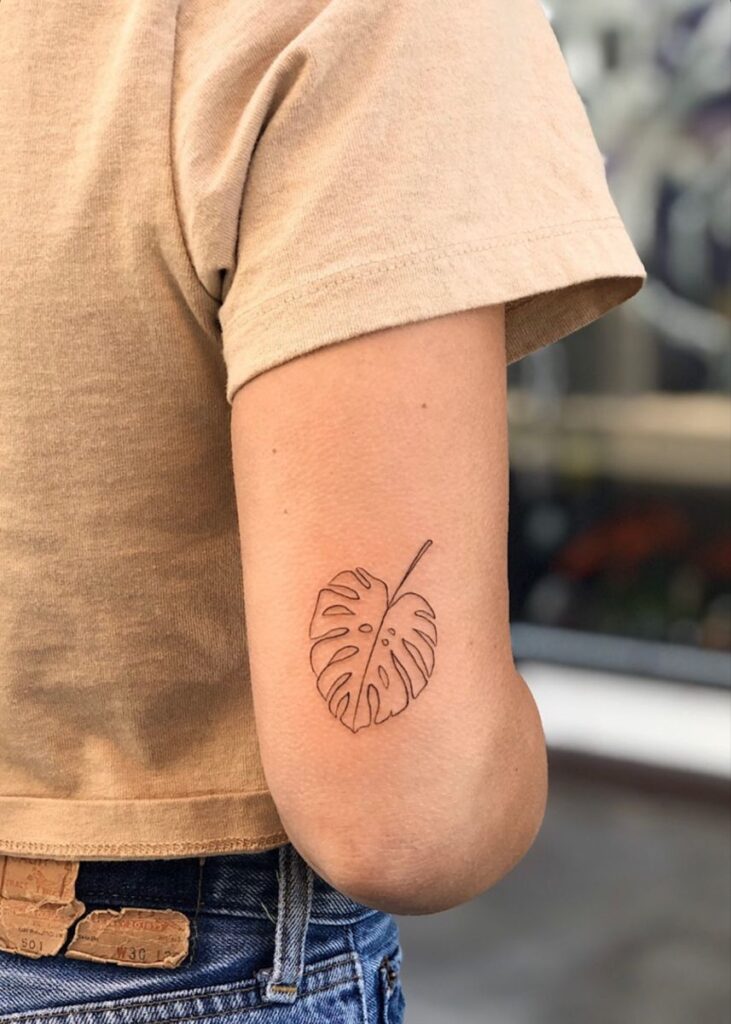

Dispelling Myths: Performance and Vibrancy of Vegan Inks
One of the most common concerns people have when considering vegan tattoo ink is whether it can truly match the performance, vibrancy, and longevity of traditional inks. The good news? Modern vegan inks are designed to perform exceptionally well, often indistinguishable from their non-vegan counterparts.
Are Vegan Tattoos Less Vibrant?
Absolutely not. This is one of the biggest myths surrounding vegan tattoo ink. Advancements in pigment technology mean that vegan inks achieve stunning levels of saturation and brightness.
- High-Quality Pigments: Vegan ink brands invest heavily in sourcing and processing high-quality mineral and plant-based pigments. These pigments are finely milled and suspended in stable carrier solutions, resulting in rich, dense colors.
- Diverse Color Palette: You can find vegan inks in virtually every color imaginable, from intensely deep blacks to brilliant reds, vivid blues, and bright whites. The variety available rivals any traditional ink line. Artists are exploring incredible designs, from intricate portraits to top 7 watercolor tattoo ideas for 2025, all achievable with vegan pigments.
- Artist Skill: Ultimately, the vibrancy of a tattoo depends significantly on the skill of the tattoo artist. A proficient artist knows how to properly saturate the skin, regardless of the ink type, ensuring the color holds beautifully.
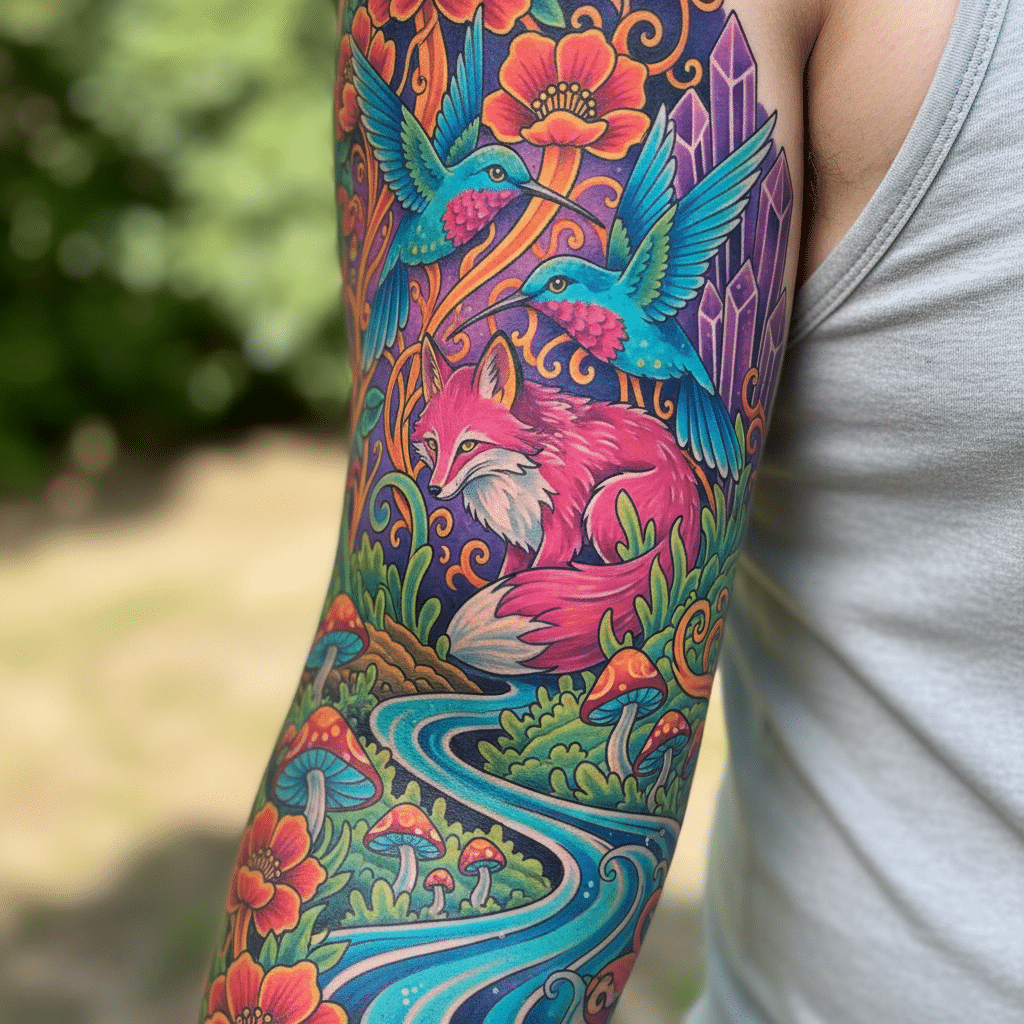
Do Vegan Tattoos Last as Long?
Another common misconception is that vegan tattoos fade faster. This is also largely untrue. The longevity of a tattoo is influenced by several factors, and the vegan status of the ink itself is not a primary determinant.
- Pigment Stability: Modern vegan pigments are incredibly stable and resistant to fading, just like their traditional counterparts.
- Application Technique: As mentioned, the artist’s technique is paramount. Proper depth, saturation, and evenness of application are crucial for a long-lasting tattoo.
- Aftercare: Diligent aftercare in the weeks following the tattoo is vital for healing and preventing premature fading. This includes keeping the tattoo clean, moisturized with vegan-friendly products, and protected from excessive sun exposure.
- Sun Exposure: UV radiation is the number one enemy of tattoo longevity, regardless of ink type. Consistent sun protection is essential for keeping any tattoo looking its best for years to come.
- Skin Type and Placement: Individual skin chemistry and the location of the tattoo on the body also play a role in how well ink holds over time.
With proper application and care, a vegan tattoo will endure just as beautifully as any other, maintaining its integrity and vibrancy for decades.

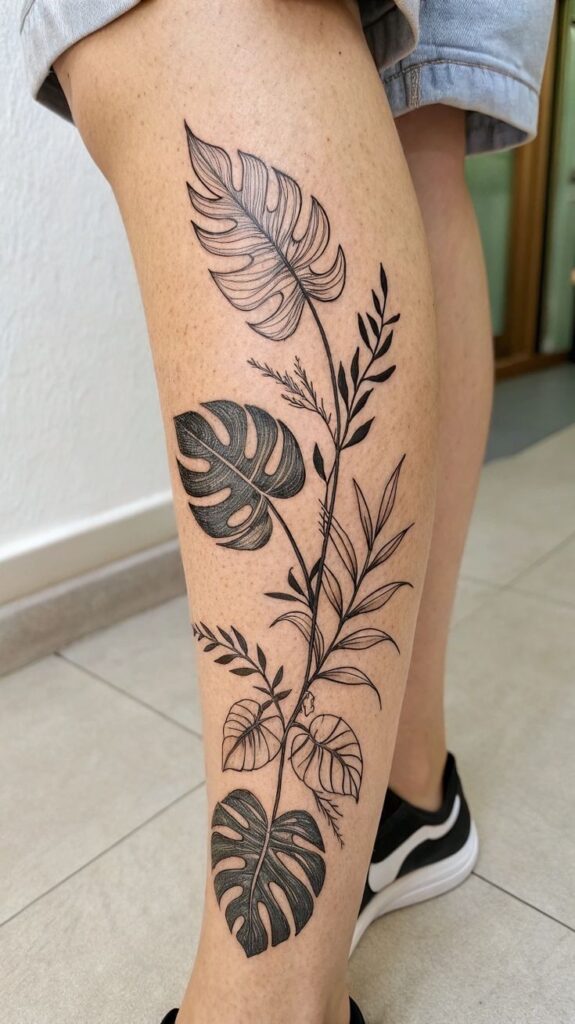
Color Palette and Versatility
The range of colors available in vegan tattoo inks is expansive, allowing artists complete freedom in their creative expression. There’s no longer a need to compromise on specific shades when choosing vegan.
- Blacks: Deep, rich blacks are achievable using carbon-based pigments (soot) rather than bone char. These provide the same intense darkness for outlining, shading, and solid fills.
- Whites: Titanium dioxide is a common, safe, and effective mineral pigment for crisp whites and highlight work.
- Colors: A spectrum of mineral and organic pigments (e.g., iron oxides for browns/reds/yellows, synthetic organics for blues/greens/purples) allows for any desired hue. These are carefully formulated to be safe and lightfast.
This versatility means that artists can create any style, from intricate realism to bold traditional, delicate fineline, or graphic designs, all with 100% vegan-compliant inks. The artistic possibilities are truly limitless, inviting creativity in the same way that a vast selection of art magazine subscriptions inspires artists across various mediums.
Finding a Vegan-Friendly Tattoo Artist and Studio
So, you’re convinced and ready to get a vegan tattoo. The next step is finding an artist and studio that can meet your needs. This requires a little research and clear communication.
Asking the Right Questions
Don’t be shy about asking direct questions. Reputable artists and studios will be transparent and happy to discuss their products and practices. Here’s what to inquire about:
- “Do you use 100% vegan tattoo inks?” This is the most crucial question. Don’t assume; always confirm. Some artists might use vegan inks for certain colors but not others, or might still have non-vegan options in their setup.
- “Which ink brands do you use?” Knowing the brands can help you do your own research if you wish. Popular vegan-friendly brands include Eternal Ink, Fusion Ink, Intenze (many vegan options), World Famous Ink (many vegan options), Kuro Sumi (many vegan options), and Silverback Ink (many vegan options).
- “Are your stencil papers and aftercare products also vegan?” This is a key detail often overlooked. Traditional stencil paper can contain lanolin, and many aftercare balms or lotions contain beeswax or lanolin. A truly vegan-friendly studio will ensure all ancillary products are also animal-free.
- “What is your cross-contamination policy for vegan supplies?” If a studio uses both vegan and non-vegan inks, ask how they prevent cross-contamination to ensure your tattoo remains entirely vegan. This might involve separate trays, caps, and needles.

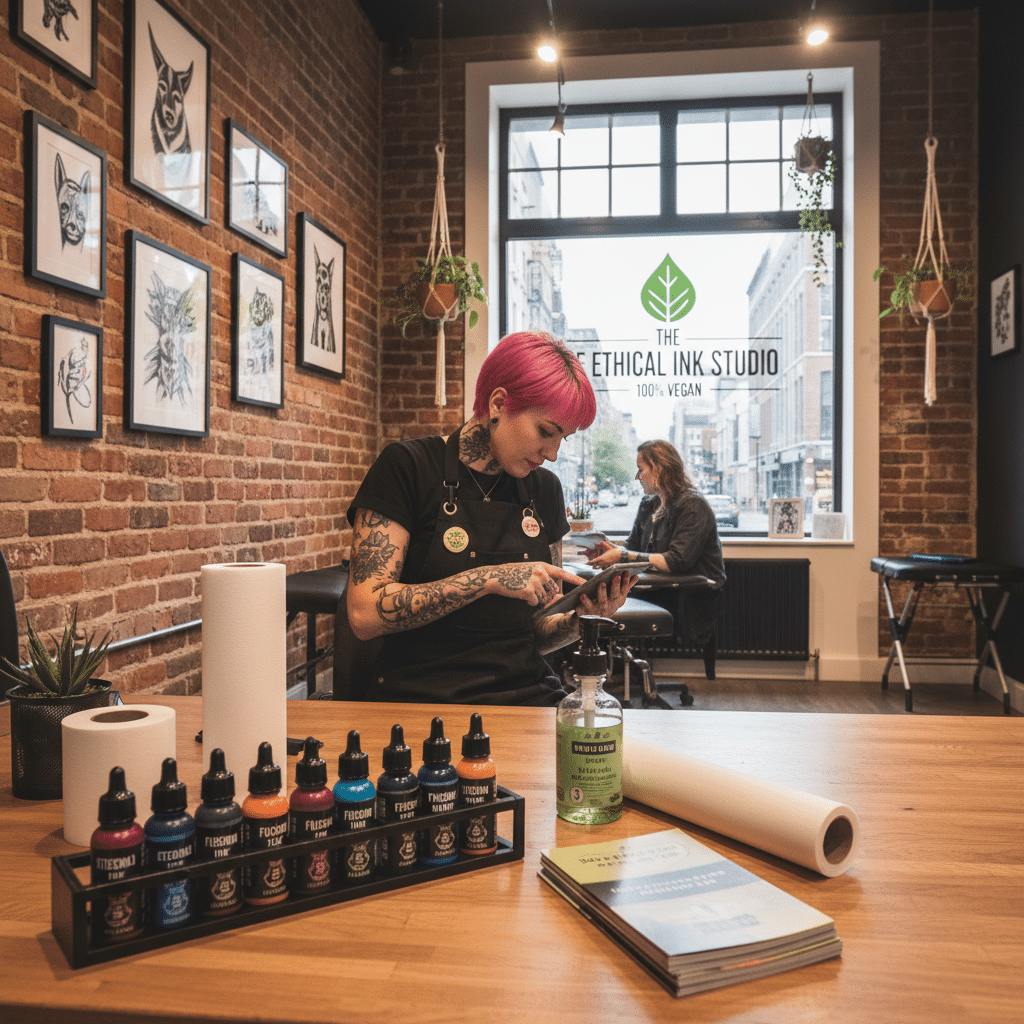
Researching Studios and Artists
Before you even step foot in a studio, a little online sleuthing can save you time and ensure you find the right fit.
- Online Presence: Check studio websites and social media pages. Many vegan-friendly studios proudly advertise their commitment to cruelty-free practices. Look for terms like “vegan-friendly,” “cruelty-free inks,” or “all-vegan studio.”
- Directories and Forums: There are online directories and forums dedicated to vegan businesses, including tattoo studios. These can be excellent resources for finding verified vegan artists in your area.
- Reviews: Read client reviews. Sometimes clients will specifically mention their positive experiences with vegan options at a particular studio.
- Consultations: Schedule a consultation. This is the perfect opportunity to meet the artist, see the studio, and have a detailed discussion about your tattoo idea and their vegan practices. It also allows you to gauge their professionalism and expertise, much like carefully vetting a design professional for practical approaches to efficient commercial space design or considering the practicalities of a functional home office.
The Role of Aftercare Products
Even if your artist uses vegan ink, your aftercare routine can unknowingly introduce animal products. Many traditional aftercare balms contain beeswax, lanolin, or petroleum jelly (which, while not animal-derived, is often avoided by strict vegans due to ethical concerns about the oil industry or environmental impact).
- Choose Vegan Aftercare: Opt for aftercare products specifically labeled “vegan.” These typically use plant-based waxes (like candelilla or carnauba), shea butter, cocoa butter, or plant-derived oils (like jojoba or sunflower oil) for moisturizing and healing.
- Ask Your Artist for Recommendations: Your artist may have specific vegan aftercare products they recommend or even stock in their studio.
- Read Labels Carefully: Always scrutinize the ingredient list of any product you apply to your healing tattoo.
A truly vegan tattoo experience extends beyond the ink itself to encompass all products that touch your skin during and after the process.
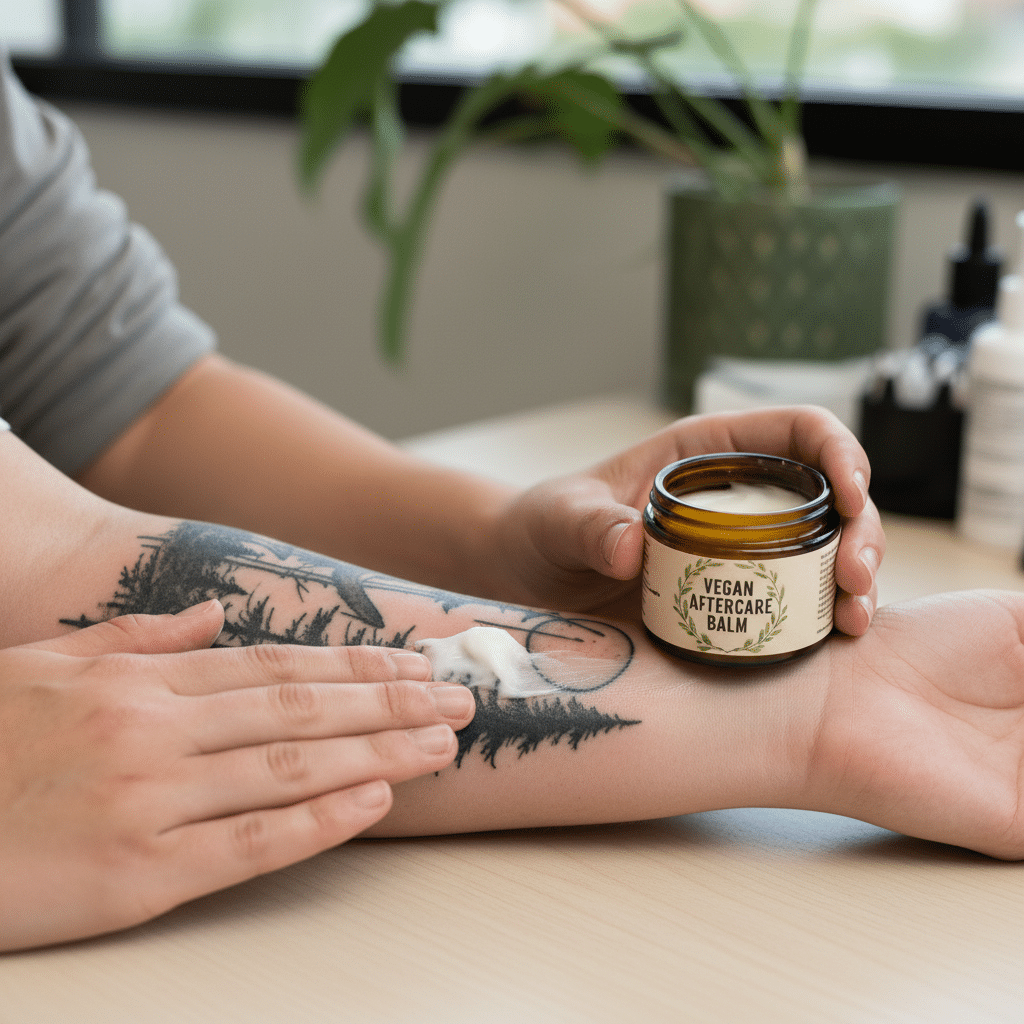
The Science Behind the Shades: How Vegan Pigments Work
Delving a little deeper into the composition of vegan tattoo inks reveals a fascinating world of organic and inorganic chemistry designed for both vibrant color and safety. Understanding this can further reinforce confidence in your choice.
Organic vs. Inorganic Pigments
Vegan tattoo inks largely rely on two main categories of pigments:
- Inorganic Pigments: These are derived from minerals and metal compounds.
Carbon Black: This is the go-to for black inks. It’s produced by the incomplete combustion of petroleum products or vegetable matter, resulting in a pure, fine carbon powder. Crucially, this is not bone char. Titanium Dioxide: Used for white pigment, it’s a naturally occurring oxide of titanium. It’s highly opaque and reflective, making it excellent for bright whites and lighter shades. Iron Oxides: These compounds are natural minerals that provide a range of earth tones: reds, yellows, and browns. Chromium Oxide Greens: A stable and widely used pigment for green hues.
- Organic Pigments: These are carbon-based compounds, but they can be synthetic (man-made) or derived from plants. In vegan inks, these are always synthetically created or carefully sourced plant-based derivatives, ensuring no animal involvement.
Azo Pigments: A large class of synthetic organic pigments that produce a vast array of bright colors, including reds, oranges, and yellows. Phthalocyanine Pigments: These provide intense blues and greens and are known for their high lightfastness. Quinophthalone Pigments:* Used for brilliant yellow-green shades.
The key distinction for vegan inks is that any organic pigment used is either synthesized without animal inputs or directly extracted from plants in a cruelty-free manner. The purity and stability of these pigments, combined with high-quality carrier solutions (like vegetable glycerin or witch hazel), ensure excellent color saturation, longevity, and safety when properly injected into the dermis.
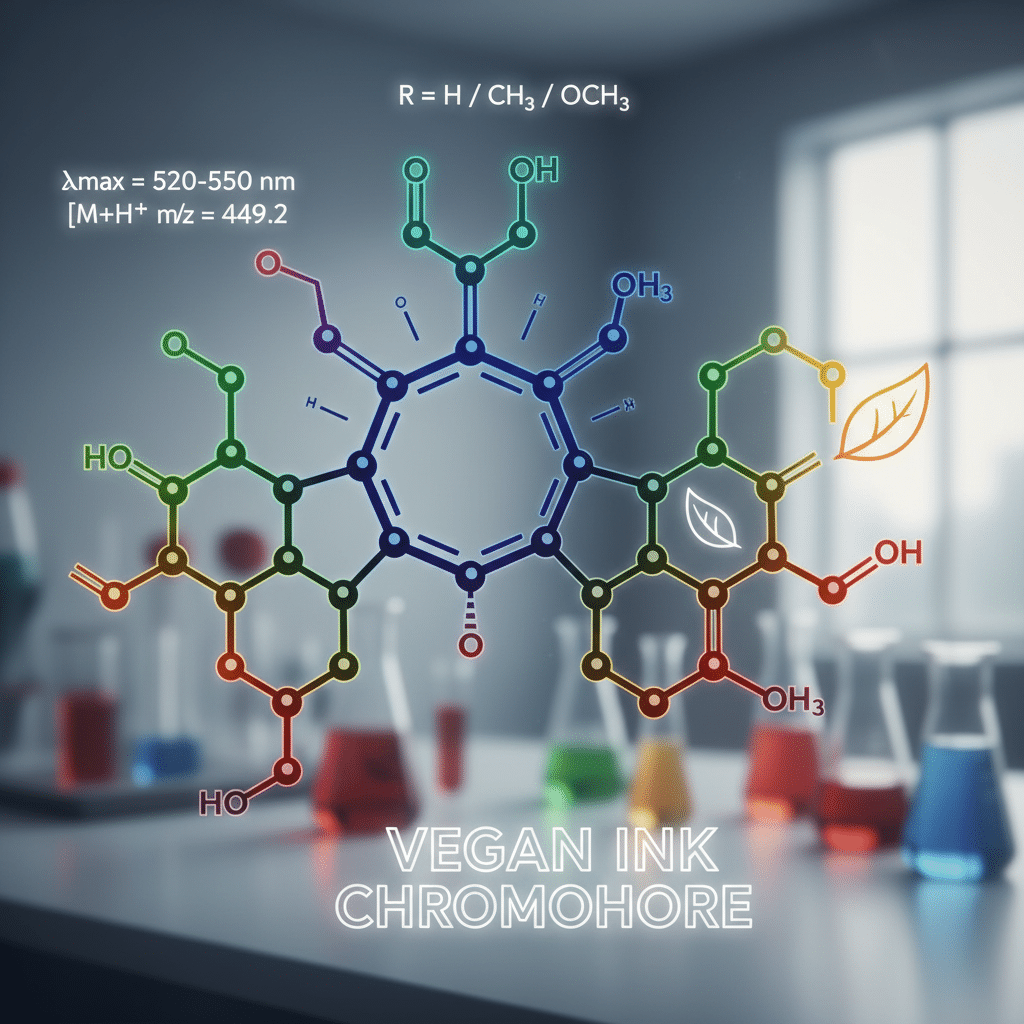
Regulatory Landscape and Safety Standards
The tattoo ink industry, while growing, faces varying regulatory standards across different regions. This is where choosing reputable vegan ink brands becomes even more important.
- Global Regulations: Regions like the European Union have stricter regulations on tattoo ink ingredients (e.g., ResAP(2008)1) than some other parts of the world, leading to higher standards for manufacturers who wish to sell internationally. Many vegan ink companies adhere to these stricter standards, even if not legally required in all markets.
- Ingredient Transparency: Reputable vegan ink manufacturers are generally very transparent about their ingredients, often providing detailed lists and certifications. This stands in contrast to some traditional inks where specific animal-derived components might not be explicitly listed or easily identifiable.
- Sterilization: All professional tattoo inks, vegan or otherwise, must be sterilized. Vegan ink manufacturers follow strict sterilization protocols (e.g., gamma irradiation) to ensure their products are free from bacteria, viruses, and fungi, providing a safe product for artists and clients.
- Heavy Metals and Toxins: Quality vegan inks are formulated to be free from heavy metals (like lead, mercury, arsenic, cadmium) and other toxic substances that can sometimes be found in cheaper, unregulated inks.
By choosing recognized vegan ink brands, clients and artists are often choosing products that meet or exceed stringent safety guidelines, demonstrating a commitment to health as much as ethics.
The Growing Market and Future of Vegan Tattooing
The demand for vegan tattoo ink isn’t just a fleeting trend; it represents a significant shift in consumer values and industry practices. The market for vegan products, in general, is booming, and tattooing is no exception.
Major Vegan Ink Brands
Many established ink manufacturers now offer extensive lines of vegan-friendly inks, and new brands are emerging with a purely vegan focus. Some of the most recognized brands include:
- Eternal Ink: One of the pioneers in providing a wide range of high-quality, fully vegan inks. They are known for their vibrant colors and consistency.
- Fusion Ink: Another widely respected brand with a significant portion of its color palette being vegan. They are popular among artists for their bright and smooth application.
- World Famous Ink: While not all their inks are vegan, they offer a vast selection of vegan-friendly colors and are transparent about their ingredients.
- Intenze Ink: Similar to World Famous, Intenze has a large number of vegan options, and they are committed to continuous product development for safety and performance.
- Kuro Sumi: Known for their deep blacks and solid lining inks, many of their formulations are vegan.
- Silverback Ink: A popular choice for black and grey work, with many vegan-friendly options.
These brands often work closely with artists to ensure their products meet the highest standards of performance, proving that ethical choices don’t mean compromising on quality.
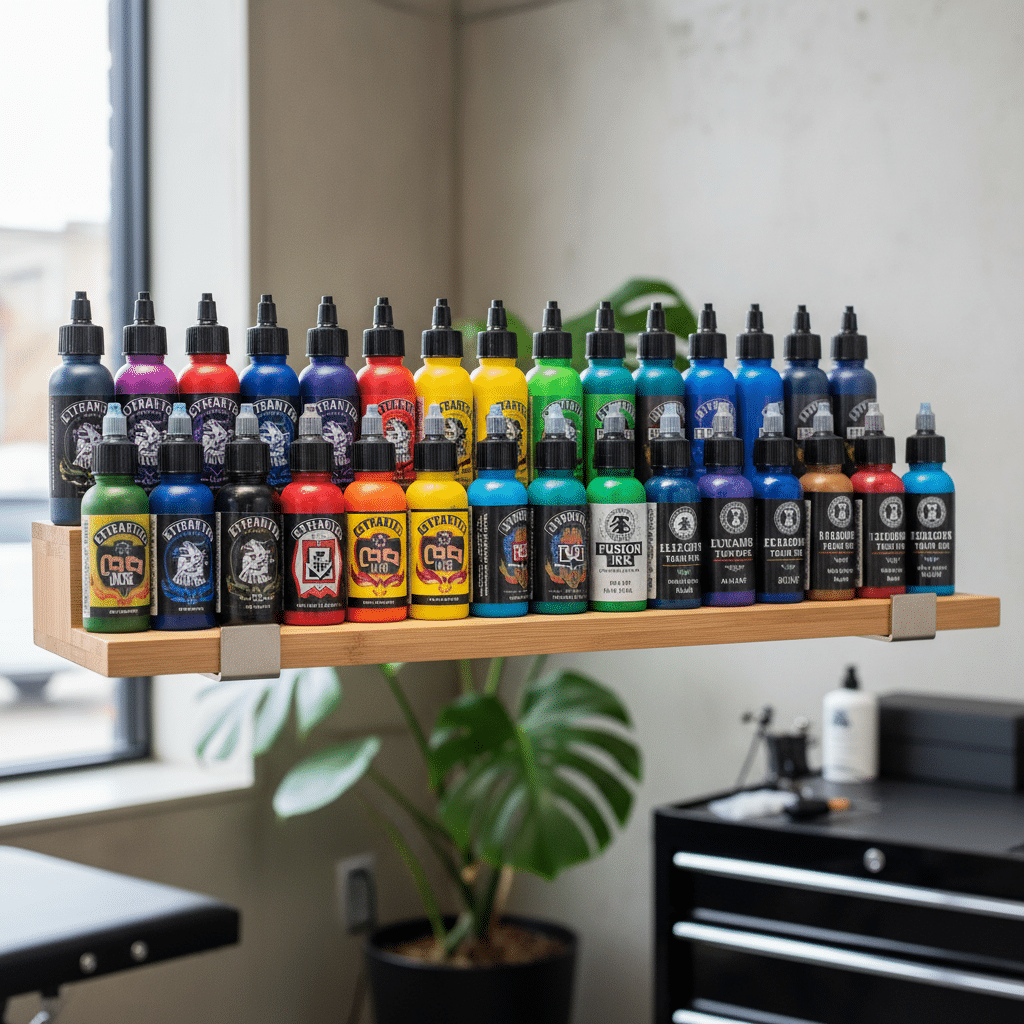
Conclusion
The journey into the world of vegan tattoo ink reveals a progressive landscape where ethics, artistry, and innovation beautifully intertwine. Far from being a niche or compromising choice, vegan inks stand as a testament to the power of consumer demand and industry evolution. They offer the same stunning vibrancy, lasting quality, and diverse color palettes as traditional inks, all while upholding a commitment to cruelty-free and often more sustainable practices.
For those dedicated to an ethical lifestyle, or simply seeking options that align with greater transparency and potentially fewer allergens, vegan tattoo ink provides an empowering choice. It’s about getting the art you desire, knowing that every aspect of its creation reflects a conscious decision for compassion and quality. As the tattoo world continues to evolve, vegan ink is not just a trend; it’s a foundational shift towards a more mindful and inclusive future for body art.
- 43shares
- Facebook0
- Pinterest43
- Twitter0



